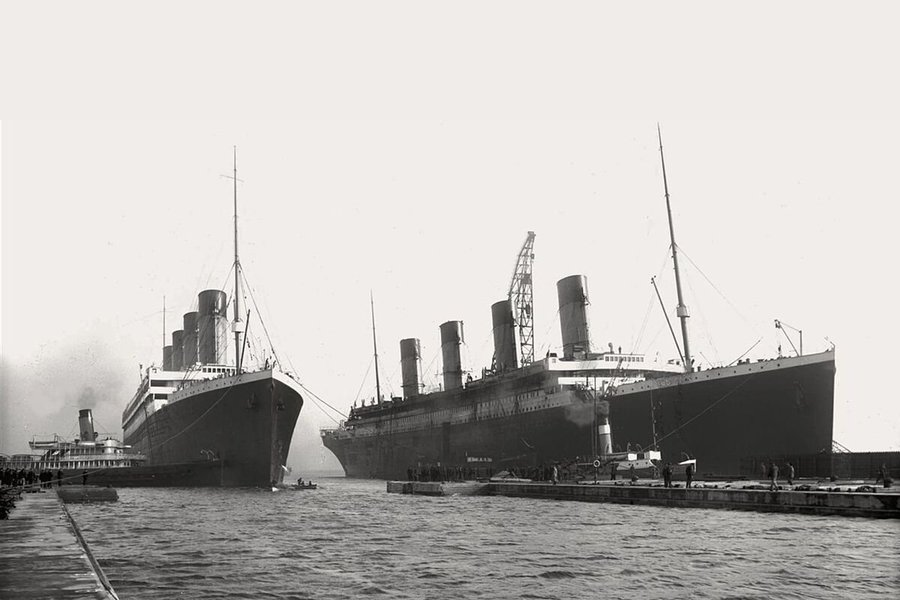Two dictators. One fragile alliance.
On June 22, 1941, Hitler betrayed Stalin and launched the deadliest invasion in history: Operation Barbarossa.
This one decision sealed the fate of WWII and reshaped the world forever.
Here's the full story... 🧵

On June 22, 1941, Hitler betrayed Stalin and launched the deadliest invasion in history: Operation Barbarossa.
This one decision sealed the fate of WWII and reshaped the world forever.
Here's the full story... 🧵


In 1939, Hitler was obsessed with conquering Poland, but there was a problem:
Britain and France had pledged to defend Poland.
Even worse, attacking Poland could drag the Soviet Union into the war, creating a two-front conflict — a scenario Hitler was desperate to avoid.
Britain and France had pledged to defend Poland.
Even worse, attacking Poland could drag the Soviet Union into the war, creating a two-front conflict — a scenario Hitler was desperate to avoid.

Stalin, on the other hand, wanted to protect his borders and expand Soviet influence.
He saw Hitler’s desperation as an opportunity.
After weeks of secret negotiations, their foreign ministers, Ribbentrop and Molotov, met in Moscow to sign the pact.
He saw Hitler’s desperation as an opportunity.
After weeks of secret negotiations, their foreign ministers, Ribbentrop and Molotov, met in Moscow to sign the pact.
The deal had two parts:
1. A public non-aggression agreement where Germany and the Soviet Union promised not to attack each other.
2. A secret protocol dividing Eastern Europe into spheres of influence. Poland would be split, with Nazis taking the west and Soviets the east.
1. A public non-aggression agreement where Germany and the Soviet Union promised not to attack each other.
2. A secret protocol dividing Eastern Europe into spheres of influence. Poland would be split, with Nazis taking the west and Soviets the east.

Hitler saw the pact as a green light to invade Poland.
Stalin saw it as a way to buy time and secure territorial gains.
Both believed they had outsmarted the other.
Stalin saw it as a way to buy time and secure territorial gains.
Both believed they had outsmarted the other.

On September 1, 1939, Hitler launched his blitzkrieg against Poland.
Just over two weeks later, Stalin’s troops invaded from the east.
Hitler viewed Stalin as a temporary ally.
In his mind, the Soviet Union was always the ultimate target.
Just over two weeks later, Stalin’s troops invaded from the east.
Hitler viewed Stalin as a temporary ally.
In his mind, the Soviet Union was always the ultimate target.
Stalin, meanwhile, was deeply suspicious of Hitler’s intentions.
He famously read Hitler’s Mein Kampf, underlining passages where Hitler described the Soviets as “common bloodstained criminals.”
By 1940, the tension between them was palpable.
He famously read Hitler’s Mein Kampf, underlining passages where Hitler described the Soviets as “common bloodstained criminals.”
By 1940, the tension between them was palpable.
Stalin began fortifying Soviet borders and annexing territories in Eastern Europe, including the Baltic states.
Hitler interpreted these moves as a threat.
In private, he began planning the invasion of the Soviet Union — codenamed Operation Barbarossa.
Hitler interpreted these moves as a threat.
In private, he began planning the invasion of the Soviet Union — codenamed Operation Barbarossa.

On June 22, 1941, Hitler broke the pact and launched the largest invasion in military history.
Over 3 million German troops stormed into Soviet territory.
Stalin was caught completely off guard.
Over 3 million German troops stormed into Soviet territory.
Stalin was caught completely off guard.
Despite months of warnings from his intelligence officers and even Winston Churchill, Stalin refused to believe Hitler would attack.
The initial German advance was devastating.
Entire Soviet armies were encircled and destroyed.
The initial German advance was devastating.
Entire Soviet armies were encircled and destroyed.

By the end of 1941, German forces were at the gates of Moscow.
But Stalin refused to surrender.
Mobilizing the Soviet population and military, he began a brutal counteroffensive.
But Stalin refused to surrender.
Mobilizing the Soviet population and military, he began a brutal counteroffensive.
Operation Barbarossa was a catastrophic miscalculation for Hitler.
The invasion turned the Soviet Union into a formidable enemy, and the war on the Eastern Front became a grinding conflict that drained German resources and manpower.
The invasion turned the Soviet Union into a formidable enemy, and the war on the Eastern Front became a grinding conflict that drained German resources and manpower.

By 1943 the Soviets won decisive victories like Stalingrad and Kursk.
For Stalin, the betrayal was a harsh lesson.
Yet it also solidified his resolve to destroy Nazis.
The Soviets emerged from the war as a superpower, but at a huge cost: over 27 million Soviet lives.
For Stalin, the betrayal was a harsh lesson.
Yet it also solidified his resolve to destroy Nazis.
The Soviets emerged from the war as a superpower, but at a huge cost: over 27 million Soviet lives.
The Nazi-Soviet Pact stands as one of the most infamous agreements in history.
It was a deal born of fear, ambition, and mutual hatred, and it set the stage for the bloodiest conflict the world has ever seen.
It was a deal born of fear, ambition, and mutual hatred, and it set the stage for the bloodiest conflict the world has ever seen.

If you like this thread, help me on my mission:
"The school and the media failed to teach you history.
My mission is to help you learn more about history and the key moments that defined our existence."
Follow me @_HistoryNerd for more...
"The school and the media failed to teach you history.
My mission is to help you learn more about history and the key moments that defined our existence."
Follow me @_HistoryNerd for more...
• • •
Missing some Tweet in this thread? You can try to
force a refresh




















